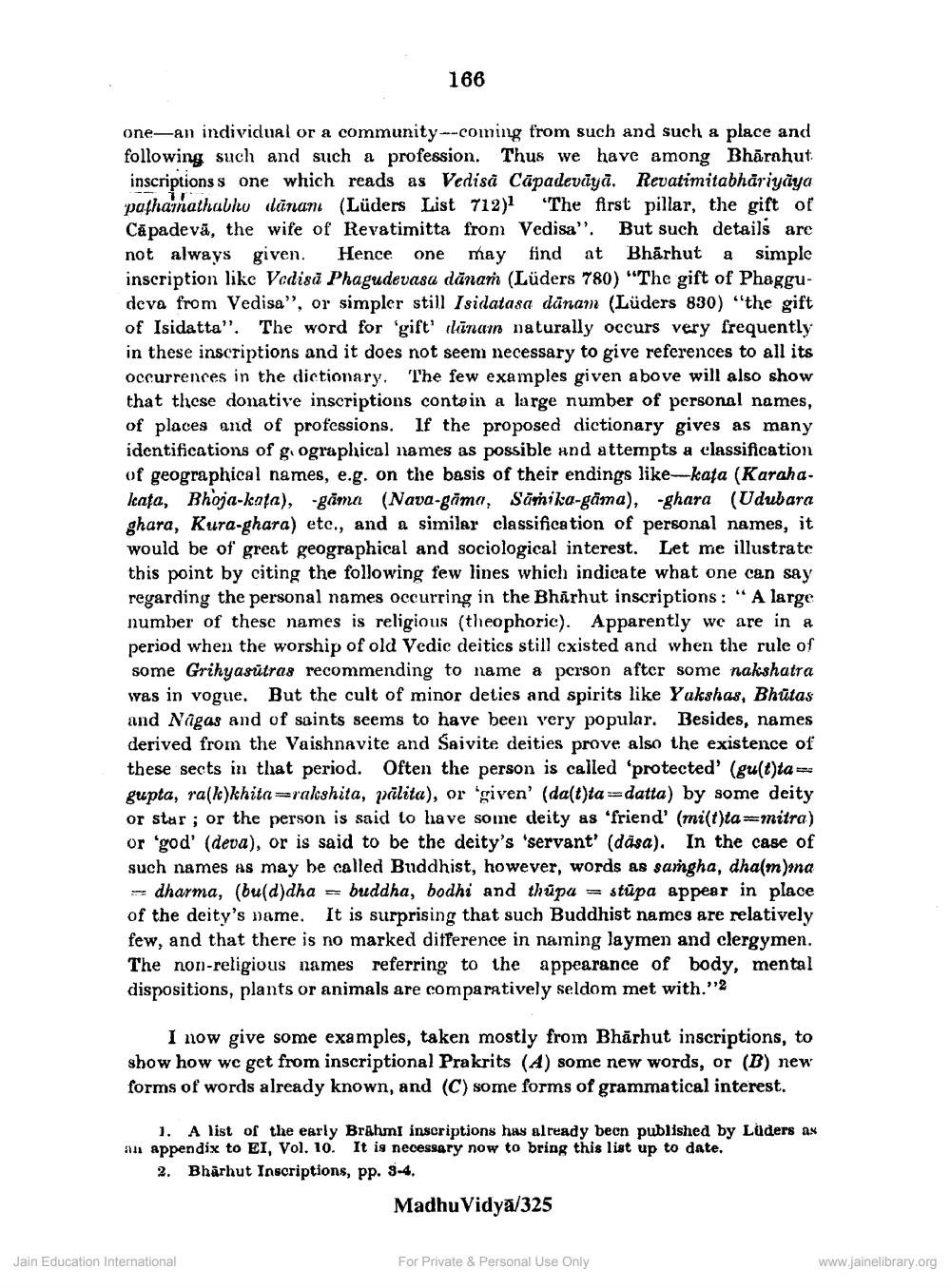________________
166
one—an individual or a community --coming from such and such a place and following such and such a profession. Thus we have among Bhārahut inscriptions s one which reads as Vedisă Capadevāya. Revatimitabhāriyāya pathamathabhu dānan (Lüders List 712) "The first pillar, the gift of Căpadevă, the wife of Revatimitta from Vedisa". But such details are not always given. Hence one may find at Bhārhut a simple inscription like Vcdisa Phagudevasa dānan (Lüders 780) "The gift of Phaggudeva from Vedisa", or simpler still Isidatasa dānam (Lüders 830) "the gift of Isidatta". The word for 'gift' lūnam naturally occurs very frequently in these inscriptions and it does not seem necessary to give references to all its occurrences in the dictionary. The few examples given above will also show that these donative inscriptions conto in a large number of personal names, of places and of professions. If the proposed dictionary gives as many identifications of giographical names as possible and attempts a classification of geographical names, e.g. on the basis of their endings like-kata (Karaha. kata, Bhoja-kata), gāma (Nava-gāma, Sānika-gama), -ghara (Udubara ghara, Kura-ghara) etc., and a similar classification of personal names, it would be of great geographical and sociological interest. Let me illustrate this point by citing the following few lines which indicate what one can say regarding the personal names occurring in the Bhārhut inscriptions: “A large number of these names is religious (theophorie). Apparently we are in a period when the worship of old Vedic deities still existed and when the rule of some Grihyasūtras recommending to name a person after some nakshatra was in vogue. But the cult of minor deties and spirits like Yakshas, Bhūtas and Nagas and of saints seems to have been very popular. Besides, names derived from the Vaishnavite and Saivite deities prove also the existence of these sects in that period. Often the person is called 'protected' (gu(t)tagupta, ra(k)khita=rakshita, pålita), or 'given' (da(t)ta=datta) by some deity or star ; or the person is said to have some deity as 'friend' (mi(t)ta=mitra) or "god" (deva), or is said to be the deity's 'servant' (dasa). In the case of such names as may be called Buddhist, however, words as samgha, dha(m)ma
dharma, (bu(d)dha = buddha, bodhi and thupa = stūpa appear in place of the deity's name. It is surprising that such Buddhist names are relatively few, and that there is no marked difference in naming laymen and clergymen. The non-religious names referring to the appearance of body, mental dispositions, plants or animals are comparatively seldom met with."2
I now give some examples, taken mostly from Bhărhut inscriptions, to show how we get from inscriptional Prakrits (A) some new words, or (B) new forms of words already known, and (C) some forms of grammatical interest.
1. A list of the early Brahmi inscriptions has already been published by Lüders as an appendix to EI, Vol. 10. It is necessary now to bring this list up to date. 2. Bhārhut Inscriptions, pp. 9-4.
Madhu Vidya/325
Jain Education International
For Private & Personal Use Only
www.jainelibrary.org




